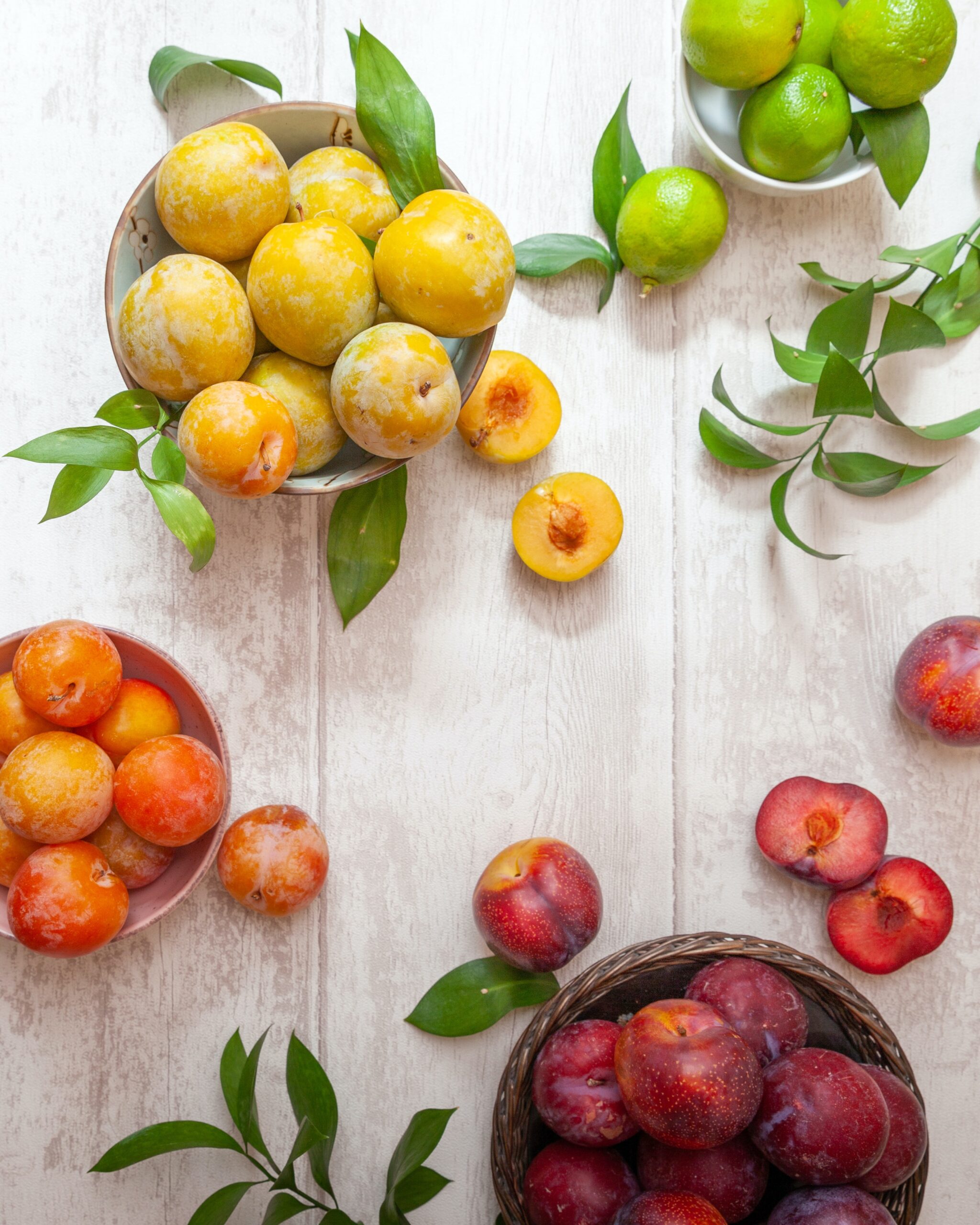
When it comes to delectable summer treats, plums and peaches are often at the top of everyone’s list. These two stone fruits not only tantalize our taste buds but also pack a punch in terms of nutrition. In this blog post, we’ll dive into the nutritional profiles of plums and peaches, comparing them in terms of calories, vitamins, dietary fibre, and more, to help you make informed choices for a healthy diet when indulging in stone fruit season.
The Basics: What are Plums and Peaches?
Plums and peaches are both classified as stone fruits due to the large, hard pit or stone in the center. These fruits belong to the Prunus genus, which includes a variety of other fruits like cherries and apricots. While they may share some similarities, there are distinct differences between the two that set them apart in terms of taste, appearance, and nutritional content.
Nutrition Value Comparison of Peach and Plums
Nutritional Comparison per 100g:
Plum nutritional facts
- Calories: Approximately 46 kcal
- Carbohydrates: Around 11.4g
- Dietary Fiber: Roughly 1.4g
- Sugars: About 9.9g
- Protein: Approximately 0.7g
- Fat: Negligible amount of saturated fat
- Vitamins: Rich in vitamin C, vitamin K, and vitamin A
- Health Benefits: Plums are known for their antioxidants, which help protect the body’s cells from damage. They also contain dietary fibre that supports digestive health.
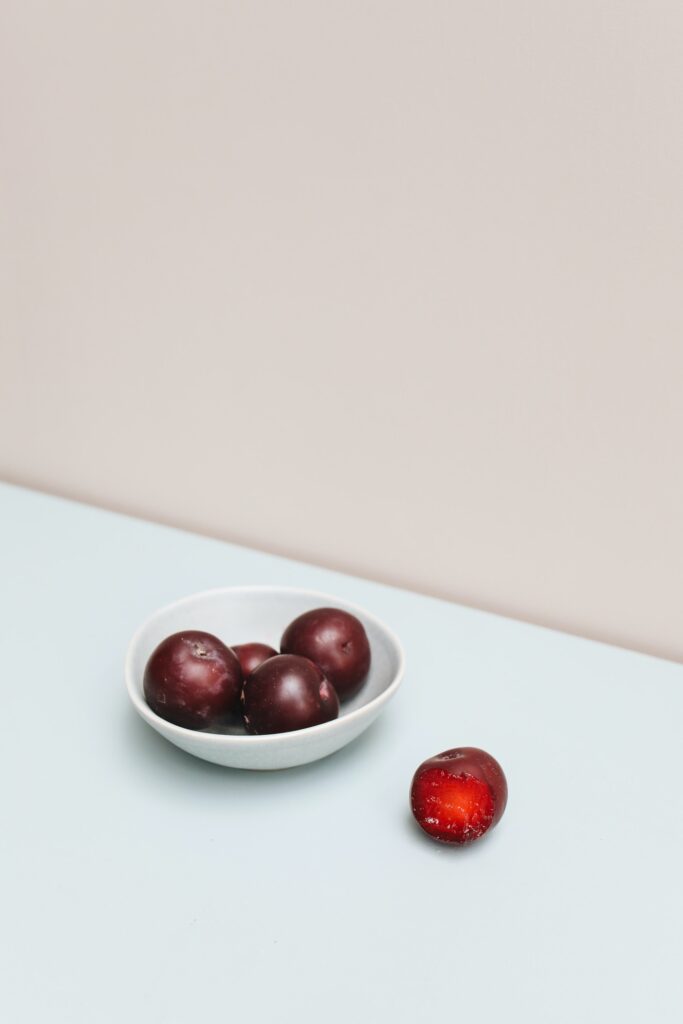
Peach nutritional facts
- Calories: Approximately 39 kcal
- Carbohydrates: Around 9.5g
- Dietary Fiber: Roughly 1.5g
- Sugars: About 8.4g
- Protein: Approximately 0.9g
- Fat: Minimal amount of saturated fat
- Vitamins: High in vitamin C and vitamin A
- Health Benefits: Peaches are a great source of vitamins and minerals that support skin health and immune function. Their dietary fibre content also aids in digestion and helps maintain a healthy gut.
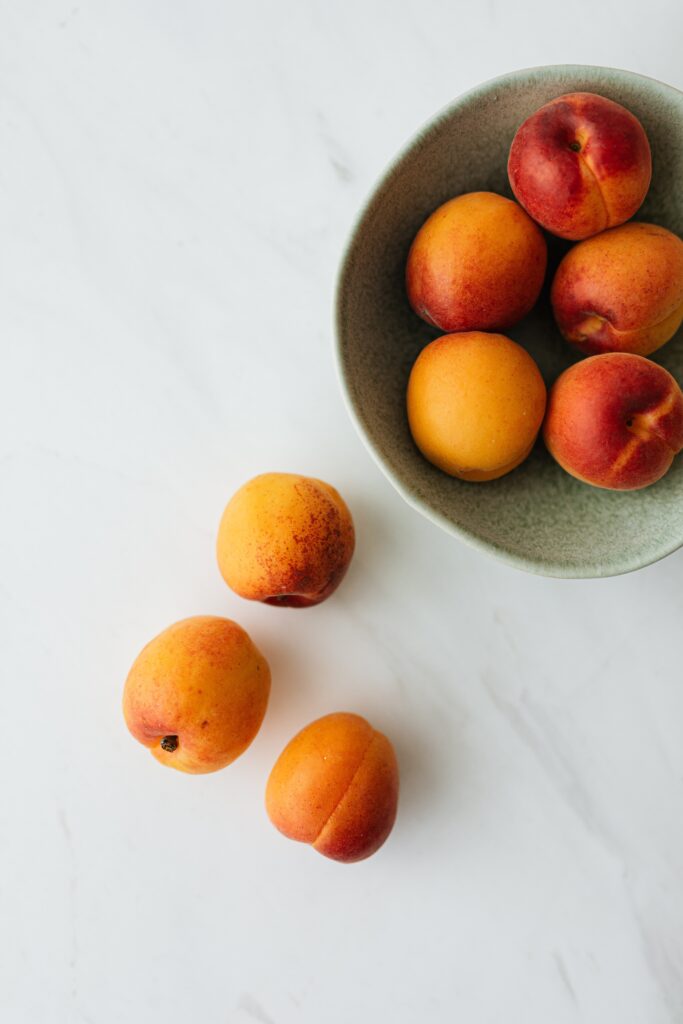
Peach vs Plum: Which One is Healthier
When deciding between plums and peaches, it’s important to consider your individual dietary needs and preferences. Both summer stone fruits offer a range of health benefits and can be enjoyed as part of a balanced diet. Here are a few key takeaways to help you make an informed choice:
Calories and Sugar
Peaches have a slightly lower calorie and less sugar content per 100g compared to plums. If you’re watching your calorie and sugar intake, ripe peaches might be a favorable option since plums contain a higher sugar content.
Dietary Fibre
Both plums and peaches provide a similar amount of dietary fibre, which aids in digestion and promotes a feeling of fullness. Including either fruit in your diet can help you meet your fibre needs.
Vitamins and Antioxidants
Both fruits are excellent sources of vitamin C and vitamin A, contributing to overall health. If you’re specifically looking to boost your vitamin C intake, either fruit is a good choice.
Taste and Preference
The choice between plums and peaches ultimately comes down to personal taste. Plums tend to have a sweet and slightly tart flavor, while peaches offer a juicy and sweet taste.
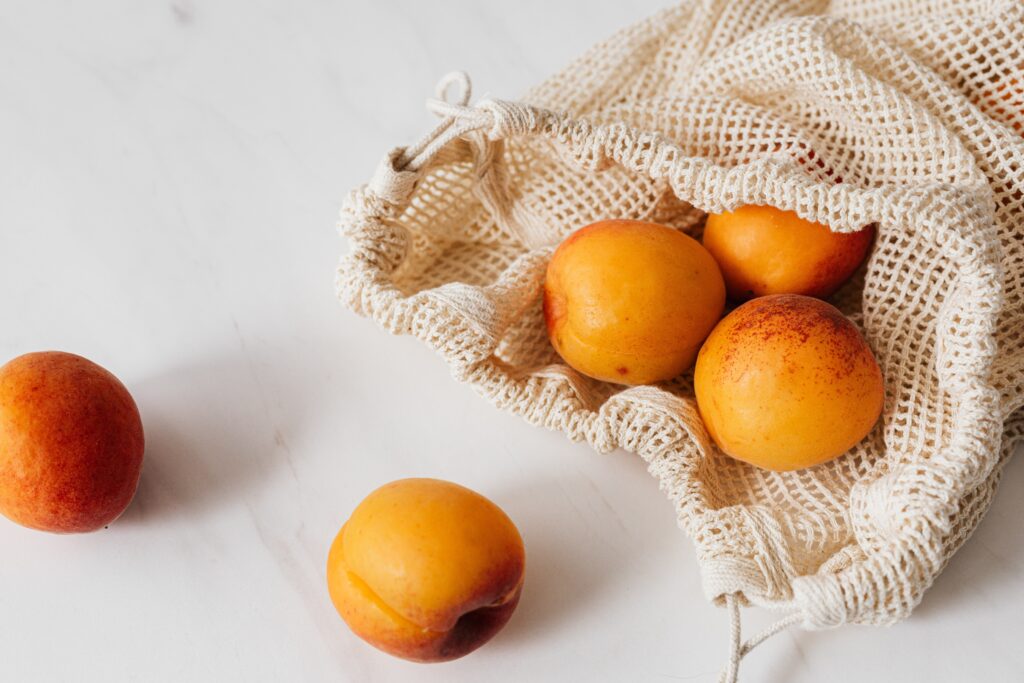
Plum and Peach Varieties
Plums and peaches, with their succulent flesh and delectable sweetness, come in a mesmerizing array of varieties that cater to a spectrum of tastes and preferences. These stone fruits are not only rich in nutrients but also offer a kaleidoscope of flavors, colors, and textures.
Plum Varieties
Plums, with their sweet-tart profile, encompass a range of varieties that differ in color, size, and taste. Here are a few notable plum varieties:
- Santa Rosa: Known for its vibrant purple-red skin and amber flesh, Santa Rosa plums are prized for their sweet and tangy flavor. They are often enjoyed fresh but can also be used for jams and desserts.
- Black Diamond: With its deep purple to black skin and juicy, sweet interior, the Black Diamond plum is a showstopper in terms of appearance and taste. Its rich flavor profile makes it a popular choice for snacking and baking.
- Mirabelle: Originating from France, Mirabelle plums are small, round, and golden-yellow in color. They are revered for their sweet, honey-like taste and are commonly used in jams, preserves, and liqueurs.
- Satsuma: These red-skinned plums boast a distinct sweetness and a subtle hint of tartness. Satsuma plums are often enjoyed fresh but can also be utilized for making compotes and sauces.
- Greengage: Light green and slightly smaller than other plum varieties, Greengage plums are cherished for their unique flavor—sweet with a touch of sourness. They are perfect for both eating out of hand and cooking.
Peach Varieties
Peaches, with their juicy flesh and delightful aroma, offer a delightful array of flavors and textures. Here are a few captivating peach varieties:
- White Peach: Distinguished by their pale, blush-hued skin and soft, velvety flesh, white peaches are incredibly sweet with low acidity. They’re a fantastic choice for those who prefer a milder, sweeter taste with a white flesh.
- Yellow Clingstone: These peaches have a yellow flesh that clings to the stone, making them ideal for canning and preserving. They’re available in both freestone and clingstone variations, this yellow fruit offers a classic peach flavor.
- Donut Peach (Saturn Peach): Aptly named for their flattened, doughnut-like shape, these peaches are characterized by their sweet and juicy flesh. Their unique appearance and mild flavor make them a favorite among kids and adults alike.
- Honeycrisp Peach: Sharing a name with its apple counterpart, the Honeycrisp peach boasts a perfect balance of sweetness and tanginess. Its firm texture and robust flavor make it a popular choice for snacking.
- Blood Peach: These peaches feature striking deep red or purple flesh, which lends them their “blood” name. Their appearance might be unexpected, but their flavor is pleasantly sweet and rich.
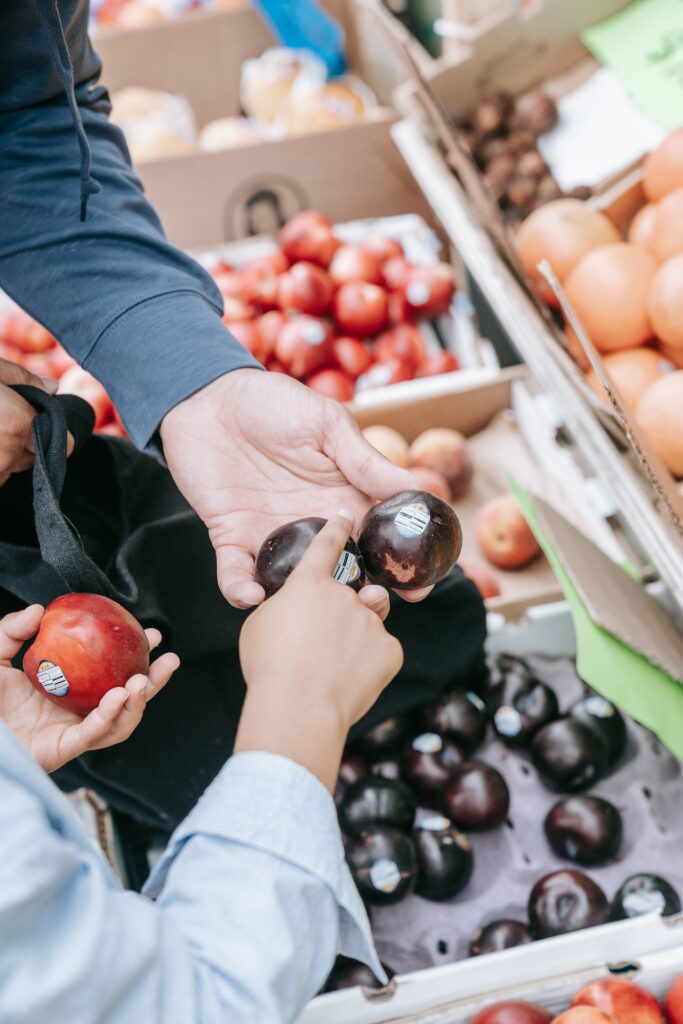
How to Choose the Perfect Plum or Peach
With the plethora of plum and peach varieties available, selecting the perfect one for your palate can be an enjoyable adventure. Consider the following tips when choosing these fruits:
- Aroma: A ripe plum or peach will emit a sweet and fragrant aroma near the stem area. This indicates optimal ripeness and flavor.
- Color and Texture: Look for plums and peaches with vibrant, uniform color and a slightly soft texture and smooth skin. Gently press around the stem area to check for ripeness.
- Varietal Preferences: Explore different varieties to find your favorites. If you enjoy a sweeter taste, opt for varieties like Santa Rosa plums or white peaches. For a more complex flavor, try black plums or yellow peaches.
Ways to Consume Peaches and Plums
As the sun-kissed days of summer roll in, it’s time to make the most of the delightful harvest of peaches and plums. These juicy stone fruits offer a burst of sweetness and a touch of tartness that can be enjoyed in a multitude of creative ways. Whether you’re looking for a quick snack, a refreshing drink, or a show-stopping dessert, here are some delectable ways to savor the flavors of peaches and plums:
1. Fresh and Simple:
Sometimes, the best way to enjoy the pure, unadulterated taste of peaches and plums is by savoring them fresh. Wash them thoroughly, slice them up, and indulge in the juicy goodness. For an extra kick of flavor, sprinkle a touch of cinnamon or a drizzle of honey over the slices.
2. Fruit Salads:
Enhance your fruit salads by adding slices of peaches and plums. Their natural sweetness complements a variety of other fruits, creating a medley of flavors and textures that are both refreshing and satisfying. Try this Honey Lime Basil Peach Fruit Salad.
3. Smoothies and Shakes:
Blend the lusciousness of peaches and plums into your morning smoothie or post-workout shake. Combine them with yogurt, a splash of almond milk, and a handful of spinach for a nutritious and flavorful treat. Try this Berry Plum Cobbler Smoothie.
4. Grilled Delights:
Elevate your summer grilling game by throwing slices of peaches and plums on the grill. The heat caramelizes their natural sugars, intensifying their sweetness and adding a smoky undertone. Enjoy them as a side dish or as a topping for grilled chicken or pork. Try this Grilled Peach Salad.
5. Preserves and Jams:
Capture the essence of peaches and plums by making your own preserves and jams. These spreads can be used on toast, pancakes, or even as a glaze for meats. Experiment with different spices like cinnamon or nutmeg for added depth of flavor. Try this Easy Plum Jam.
6. Baked Goods:
Incorporate peaches and plums into your baked goods for a delightful twist. Add them to muffins, tarts, crisps, and peach pies to infuse your desserts with their natural sweetness. Try these Peach Crumble Breakfast Muffins.
7. Chilled Soups:
When the weather heats up, indulge in chilled soups made with peaches and plums. Blend the fruits with yogurt, a hint of lime juice, and a touch of mint for a refreshing and revitalizing summer soup. Try this Plum and Berry Soup.
8. Cocktails and Mocktails:
Peaches and plums can be the star of your summer beverages. Muddle them in cocktails or mocktails, or create fruit-infused water by adding slices to a pitcher of water for a hint of flavor.
Try these…
9. Salsas and Chutneys:
Create vibrant salsas or chutneys using peaches and plums. Combine them with red onion, jalapeño, cilantro, and lime juice for a tangy and zesty condiment that pairs beautifully with grilled meats and seafood. Try this Peach Salsa Recipe.
10. Ice Cream and Sorbets:
Indulge in the sweet creaminess of homemade ice cream or sorbet infused with the essence of peaches and plums. These frozen treats offer a cooling and delightful way to beat the summer heat. Try this Plum Sorbet Recipe.
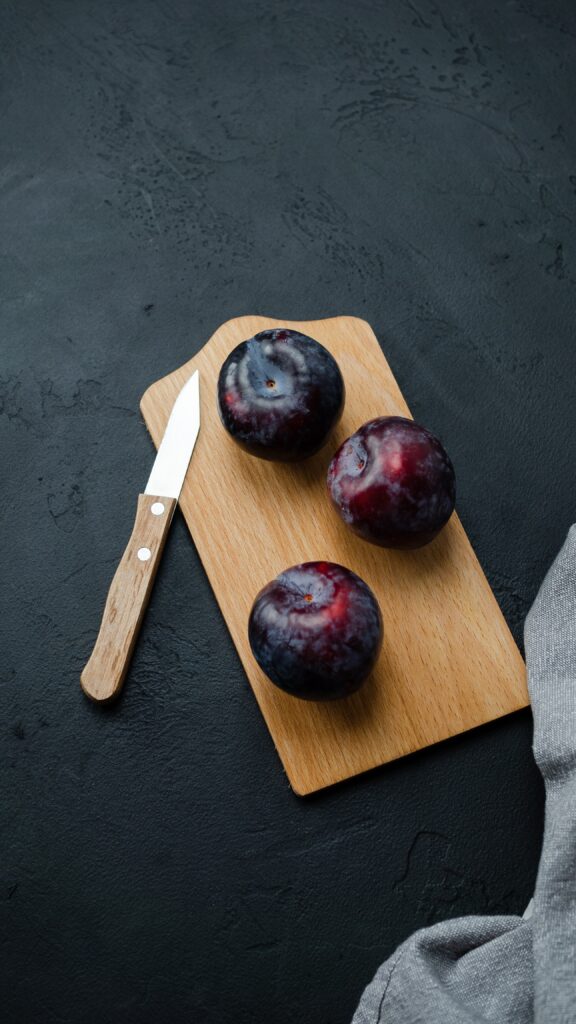
How to Store Peaches and Plums for Lasting Freshness
To ensure the continued enjoyment of plums and peaches, it’s crucial to store them correctly to slow down the ripening process and extend shelf life. To store these stone fruits at their best, place them in a single layer in a cool, well-ventilated area, away from direct sunlight at room temperature. If they’re slightly underripe, leaving them at room temperature for a day or two can help them ripen fully. Once they’re ripe and ready to eat, transfer them to the refrigerator’s crisper drawer to slow down the ripening process. Keep them unwashed until you’re ready to enjoy them to prevent moisture buildup, which can lead to spoilage. By following these simple storage guidelines, you can relish the natural sweetness of plums and peaches over an extended period.
Other Peach Recipes You’ll Love
In Conclusion
Whether you opt for plums or peaches, incorporating these stone fruits into your diet can be a delicious and nutritious choice. Their low calorie, high fibre, and vitamin-rich profiles make them ideal additions to a well-rounded diet. Remember that variety is key to reaping the benefits of different nutrients, so consider enjoying both plums and peaches as part of a diverse fruit selection. So, the next time you’re at the grocery store, don’t hesitate to pick up these juicy delights and savor the goodness they offer.

Christopher is a food and lifestyle expert, recipe developer and the content creator behind May Eighty Five. With years of experience in the kitchen, he also shares tips, tricks and how to’s that he has learnt over the years. Every week, he shares quick, simple and mostly healthy recipes along with some home and entertaining tips. You will find flavorful cocktails, delicious appetizers, tasty mains and some indulgent desserts. As a home decor enthusiast, he also likes to share simple DIY projects and simple tips for a beautiful home.


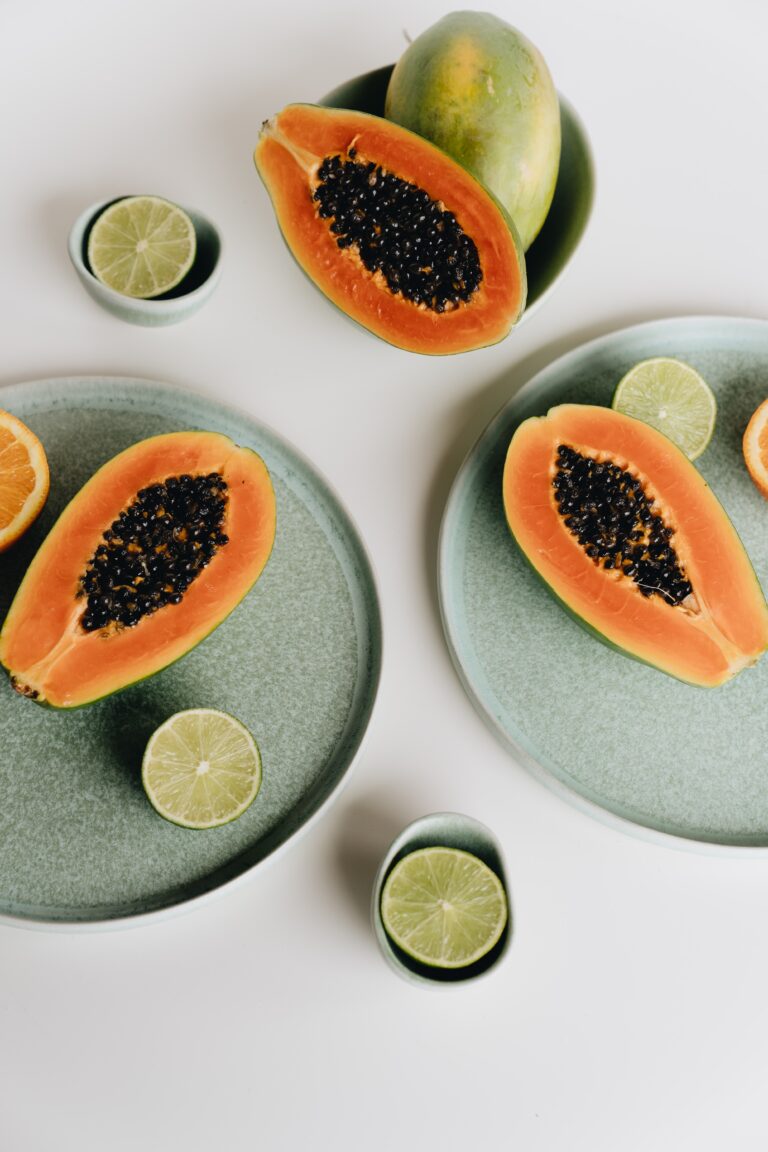


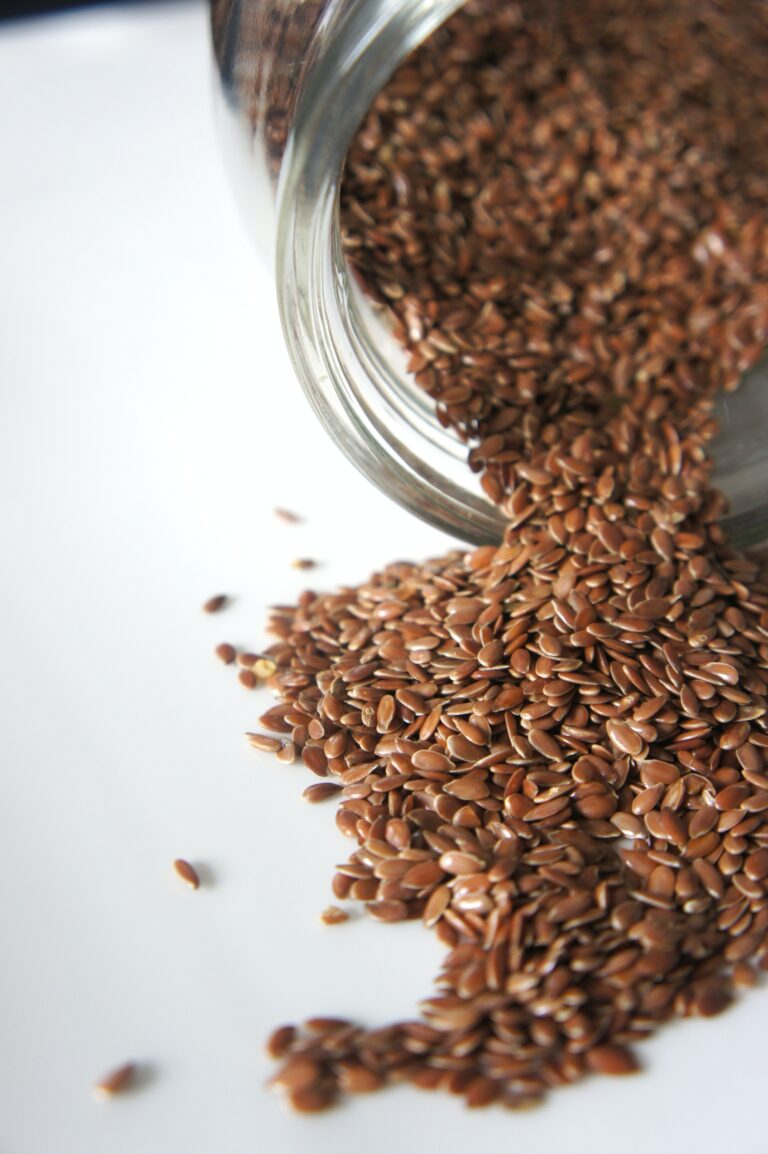
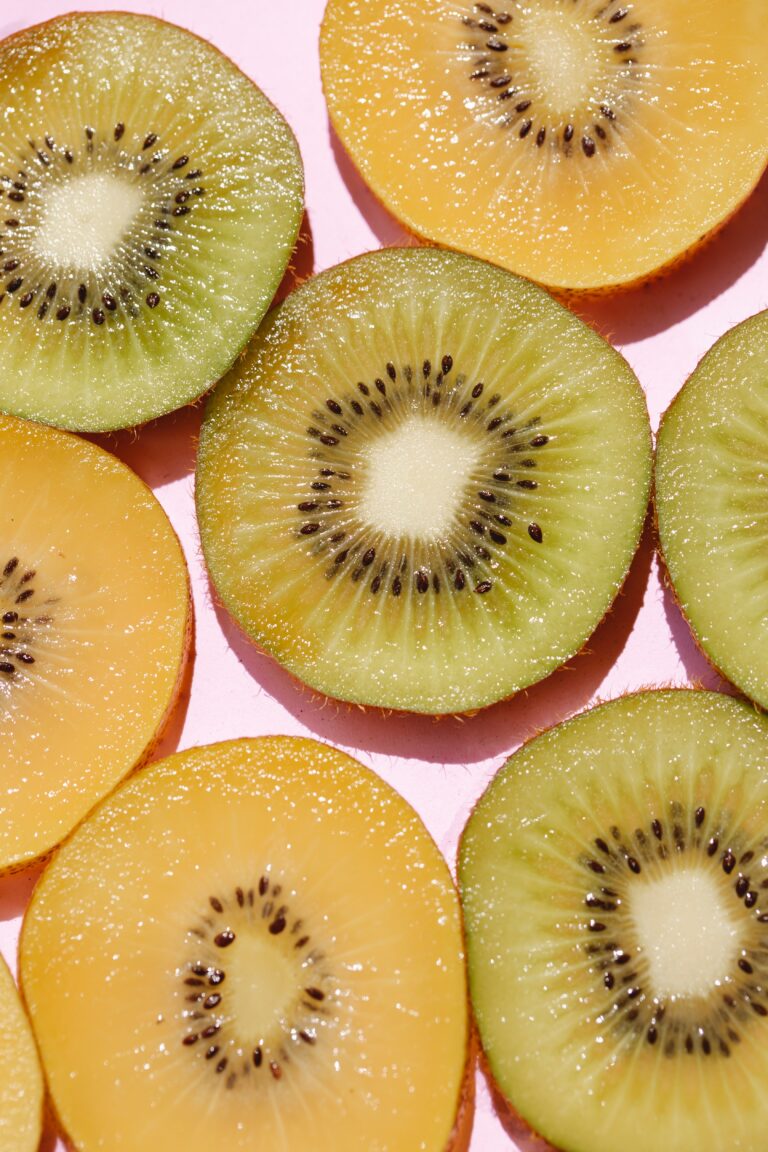
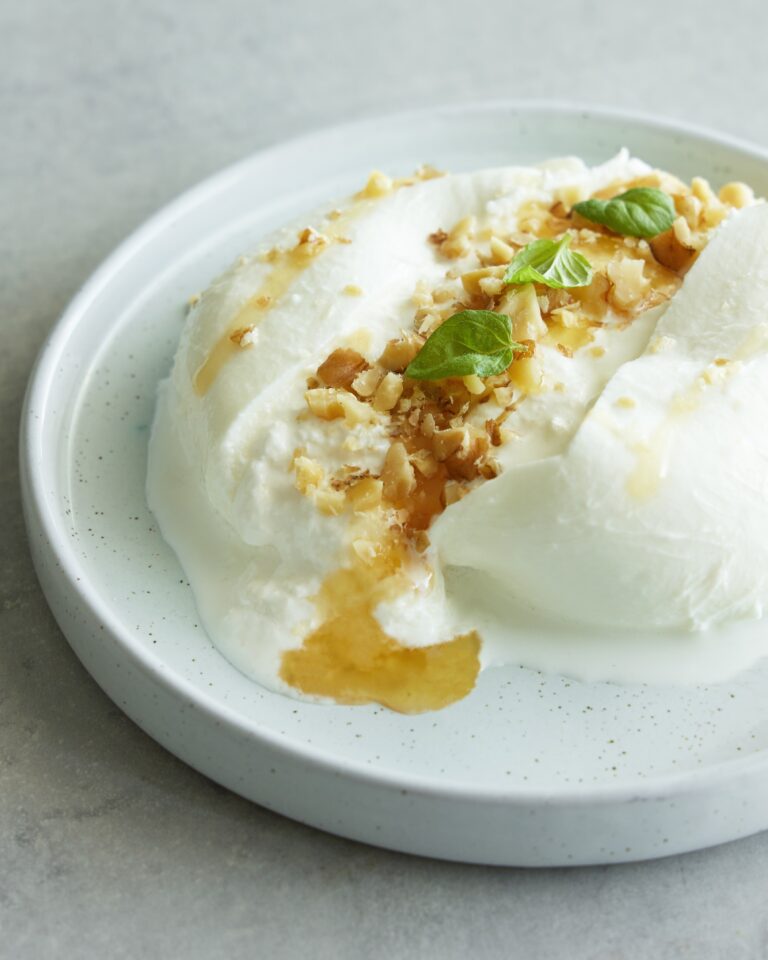
11 Comments